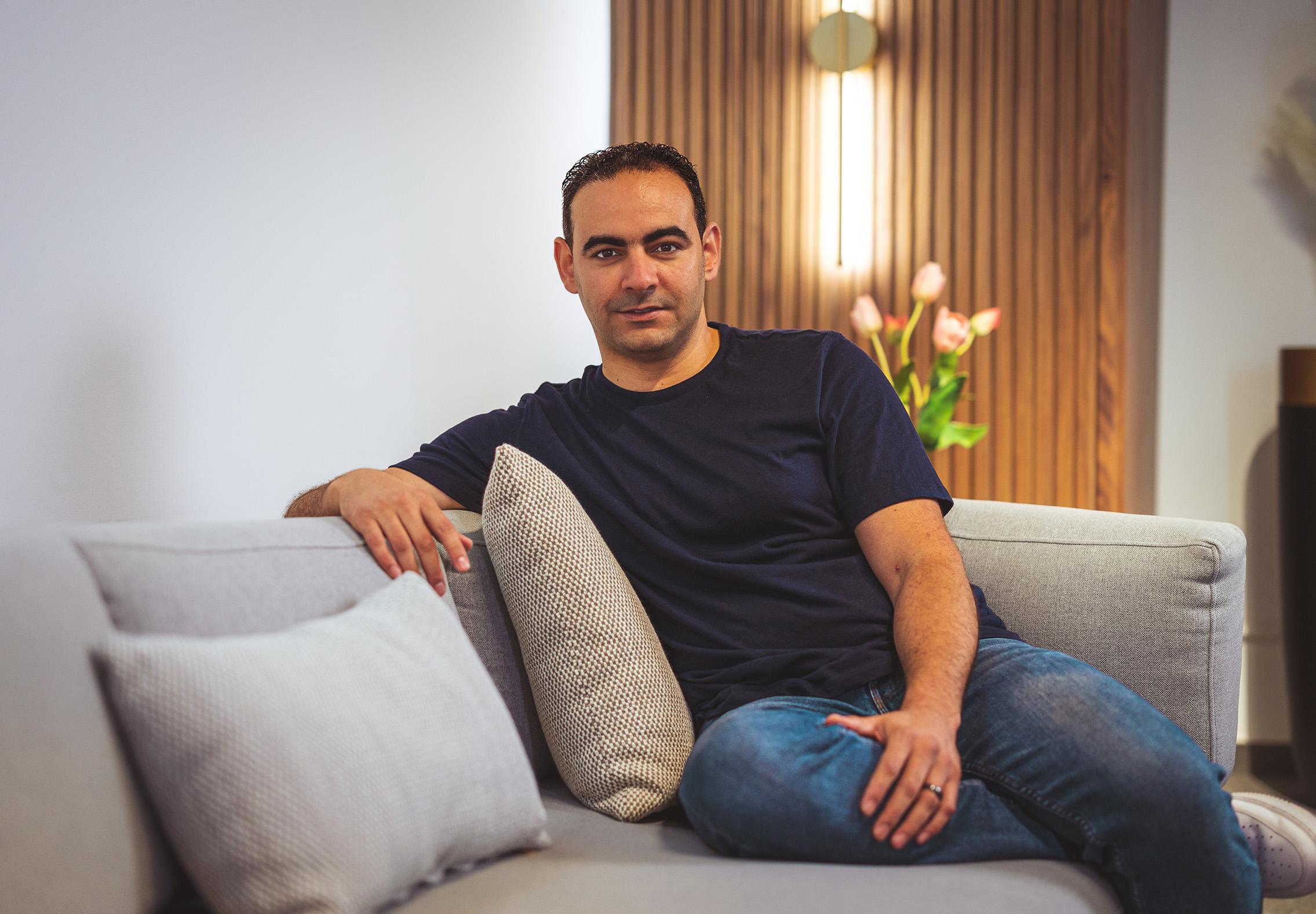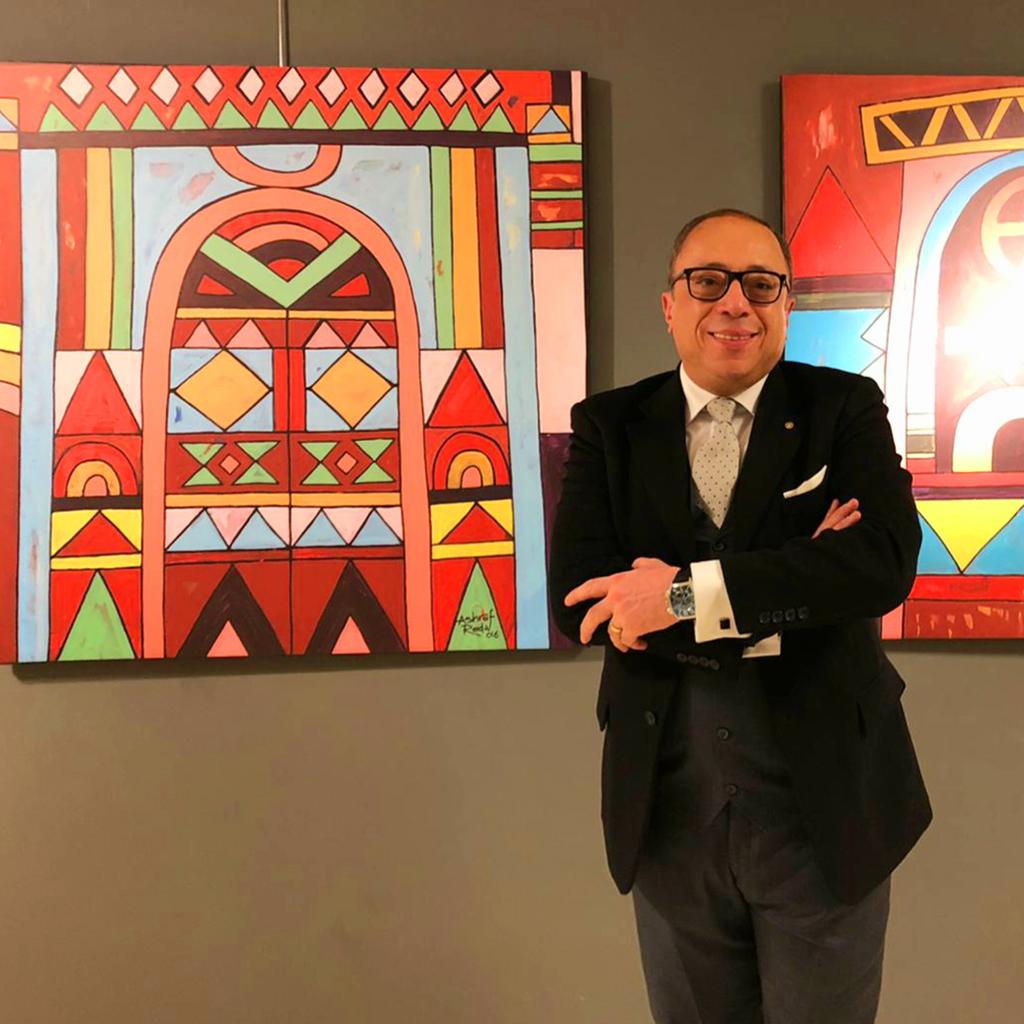
Written by: Dr. Ashraf Reda
Date: 2022-06-01
Nubian architecture is “a system of life and not just buildings for housing”
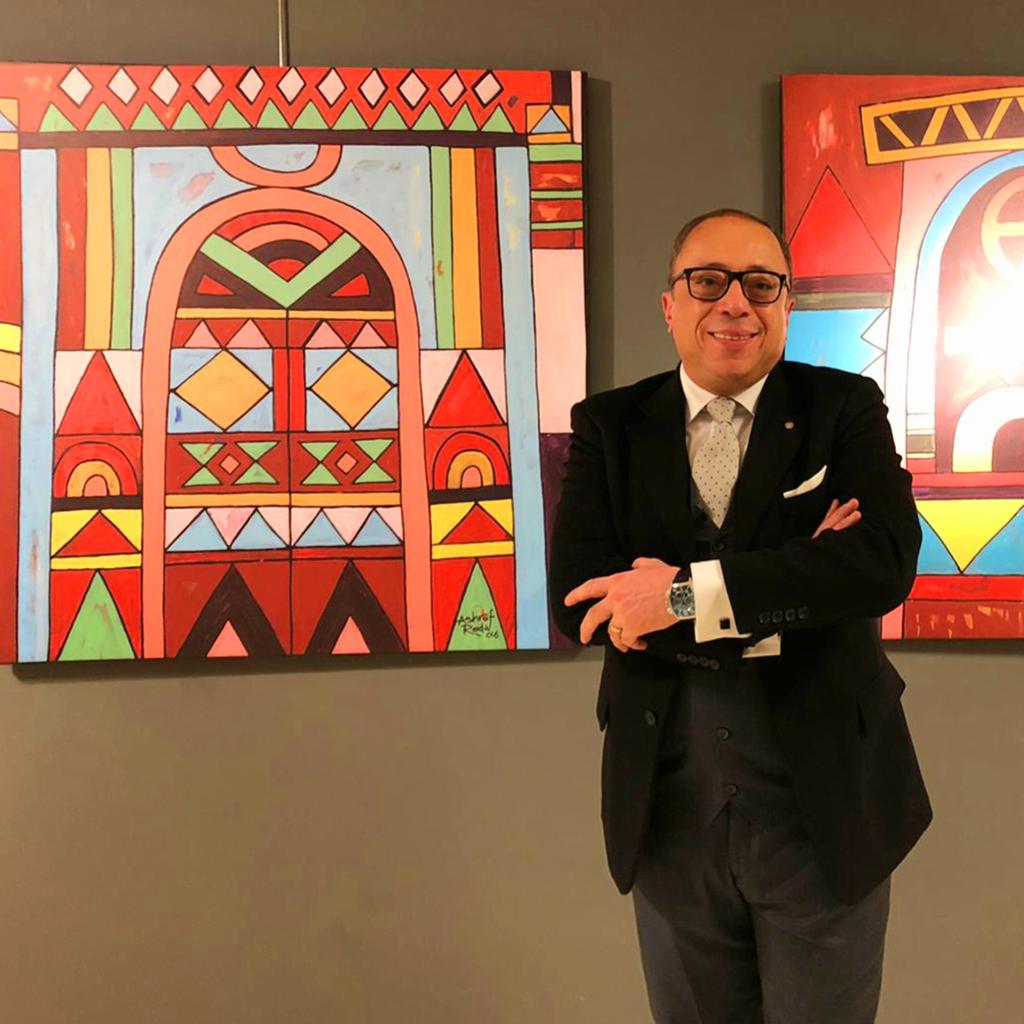
Nubian architecture is “a system of life and not just buildings for housing,” as summed up by the Chief of Architects Eng. Hassan Fathy (1900 - 1989) who was famous for his unique architectural style, which derived its sources from rural Nubian architecture built of mud and bricks. He was also famous for the village of "Al-Qurna" that he built for 3,200 families, which is considered an essential part of the history, and he called it "the architecture of the poor". The Nuba people were participating, not only in the construction process but also in the decoration of their facades with paintings, which is often done by the housewives and girls; and there was a desire to set up the outdoor terraces in front of the house's doors, where neighbors meet.
Nubia has always held a particular place in people's hearts because of its architecture, Nubian decorations, position, and proximity to the Nile. It is distinguished by its embellishments and vivid tones, which contain numerous inscriptions, art, and sculptural forms in terms of design and visual appeal. The Nubian legacy is a genuine aspect of the Egyptian identity and a continuation of the ancient Egyptian civilization; all these elements were the real inspiration behind Hassan Fathy, the outstanding architect’s distinctive architectural creations.
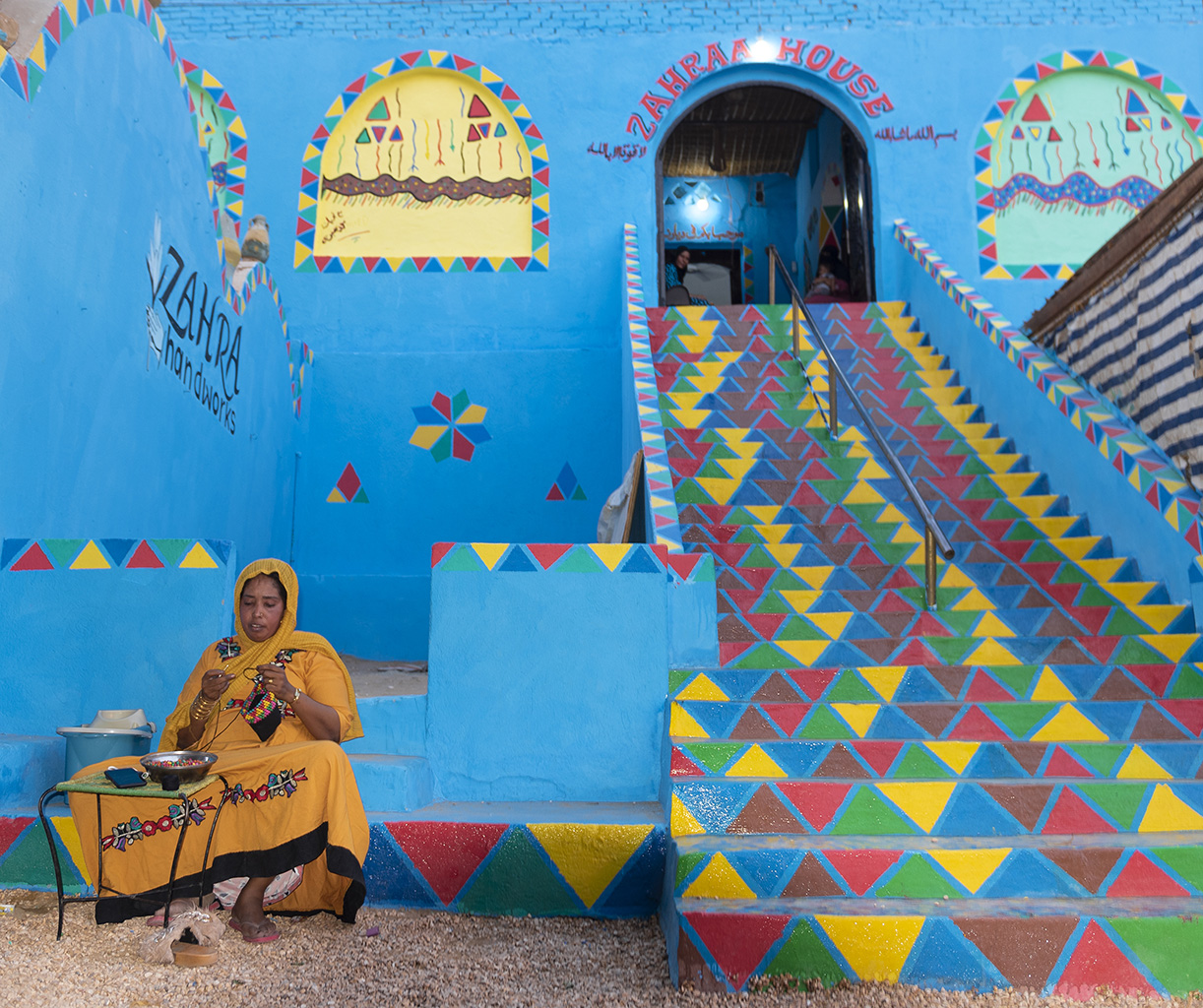
The Nubian architectural history remained a real representation of civilization throughout the years, and it was distinct from other forms of architectural arts. Nile silt is one of the most basic raw elements found in nature. Nubian architecture is a field rich in geometric patterns and symbols with symbolic meanings. The sign serves a purpose, but it becomes a symbol when it reminds us of Nubian arts, and it may also become a symbol with cultural overtones, as Nubian buildings do. It reminds us of the ancient land of Nubia when we look at it, and this can be sensed in various complex features including the beauty of lines, colors, and arrangement. Beauty in Nubian architecture is not limited to external aesthetics only, but it is linked to humans by providing climatic comfort, security, and tranquility, which the building provides to its inhabitants, and beauty interconnects with the inner comfort provided by the distinguished building that protects from the heat and cold. So, people start building images and symbols based on his visual ability in the context of his cultural and social background.
This building is environmentally friendly as it is characterized by unique characteristics— whether regarding the building materials or the design— and its division that is based on wind directions and natural lighting. Nubian architecture is distinguished by its drawings that bear the Nubian inscription. The Nile, for example, has a mythical character, and part of it, like the palm tree, is an inherited affection. It is also marked by the phenomenon of celebrating life, which is reflected by the planting of geometric forms such as circles, triangles, stars, and crescents in drawings and structured labor.
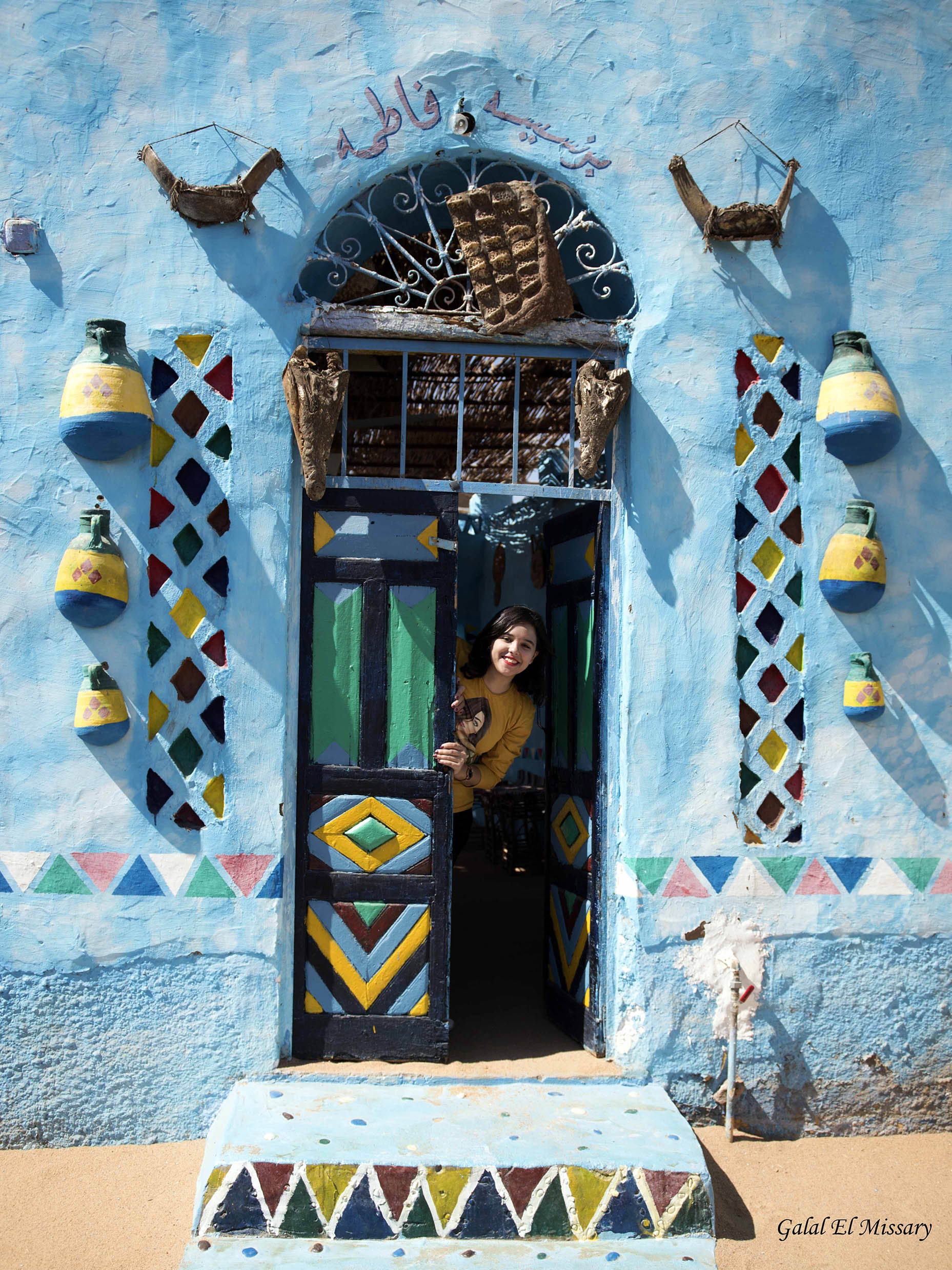
The Nubian symbols and motifs are not only forms and decorations but are symbols loaded with social, cultural and intellectual values of the Nubian environment. The symbol values the environment; the Nubian artist always tends to be optimistic, and this is evident through the attractive colors, drawings and decorations, in addition to their artwork that comprises a lot of symbols whose meanings and connotations differ from one artist to another. These are reflected in the facades of the building, its entrances, and the walls of the inner houses that are currently located in the new Nuba homes and the West region Sohail Tourist Office in Aswan.
The symbol is a liberation in the language of form for the thought, belief and feelings of the popular artist, and art forms do not rise to the level of symbol unless they are loaded with social and cultural values of the environment that has strong roots that keep extending for long periods of time until it proves its value and becomes circulated in its environment. Nubian arts reflect the peculiarities of culture. The Nubian includes symbols that reflect its folklore and beliefs, and this appears in the frescoes that decorate the facades of the house and its entrances, and the symbol in folk arts is the artistic unit that the popular artist chooses from his environment in order to beautify his dwelling.
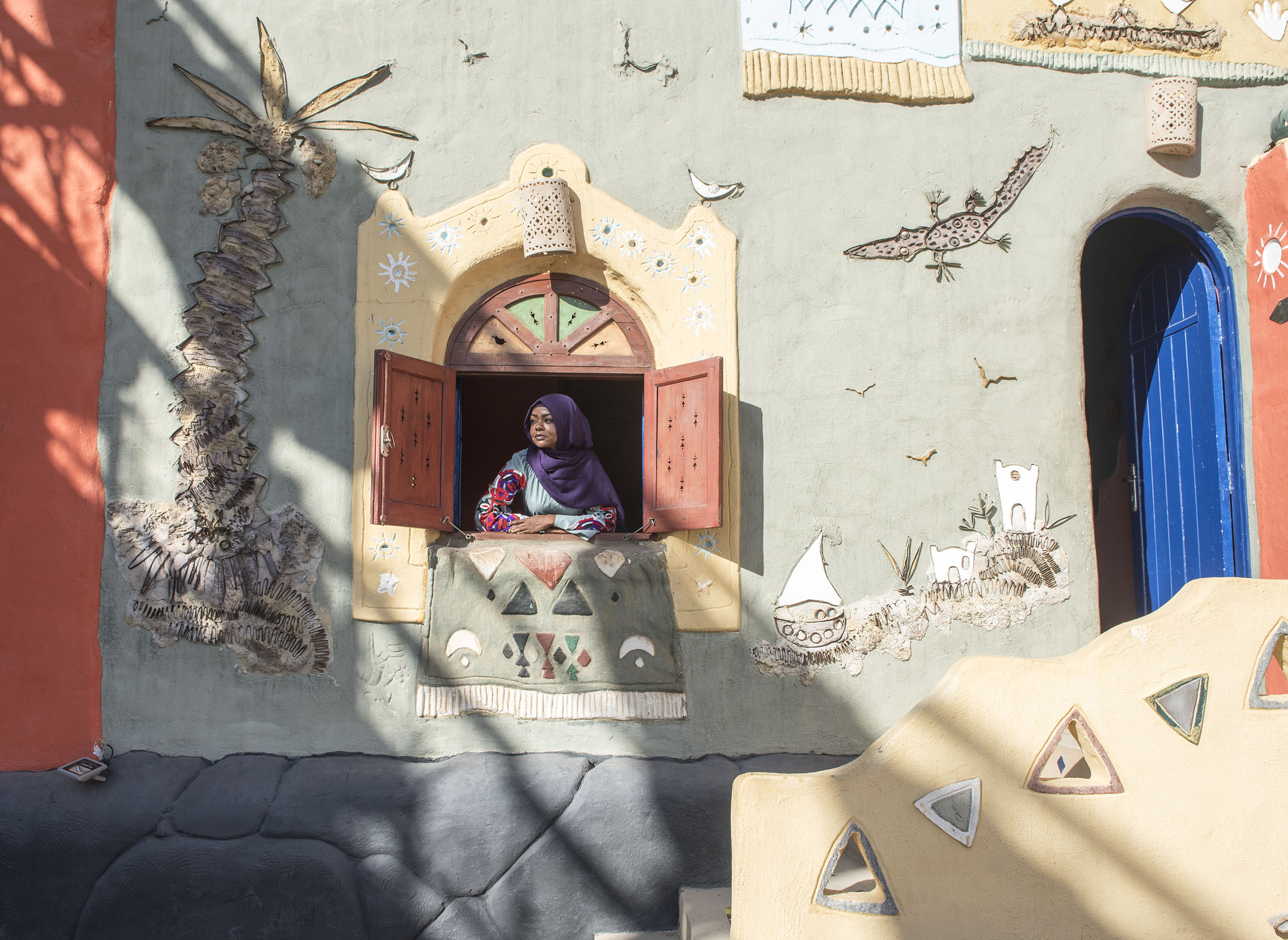
The Nubian villages are distinguished by their colorful dwellings, and the houses, covered with these delicate linear decorations, seem as if they were embroidered with them. The decoration of the entrances was among the most distinguished architectural features of the Nubian house, and the spotlight on the entrance was made by each family to allocate the building. In the end, the entrance decoration became a symbol for the family. The Nuba people depend on the colors that attract the viewer and have a great impact on the hearts of the recipient, as the Nubian house is distinguished by its stark colors, which play a major role in attracting attention. The Nuba people prefer some colors over the others, such as red and shades of blue, violet and pink, as well as white and blue because they are associated with the color of the Nile and the sky. Nubian houses are characterized by the patterns of geometric decoration; some of which are distinguished by several connotations associated with beliefs, so I painted scorpions, veils and pendants, which depend— in engineering construction— on the diversity of plastic solutions for decorative concepts, in addition to painting the crescent, boat, fish, birds, stars, and the sun.
Despite the value of Nubia's monuments, many people were surprised by the magnificent Nubian residences along the Nile's two banks. These residences were both surprising and revelatory. The buildings were well-designed, spacious, and pleasant, constructed of stone or mud, and painted and detailed. Then it was built with bricks, and the shapes of Nubian architecture were the consequence of a variety of reasons. We can see that altitude, climate, and other variables, as well as people's economic situation and social structure, all had a role in the design.
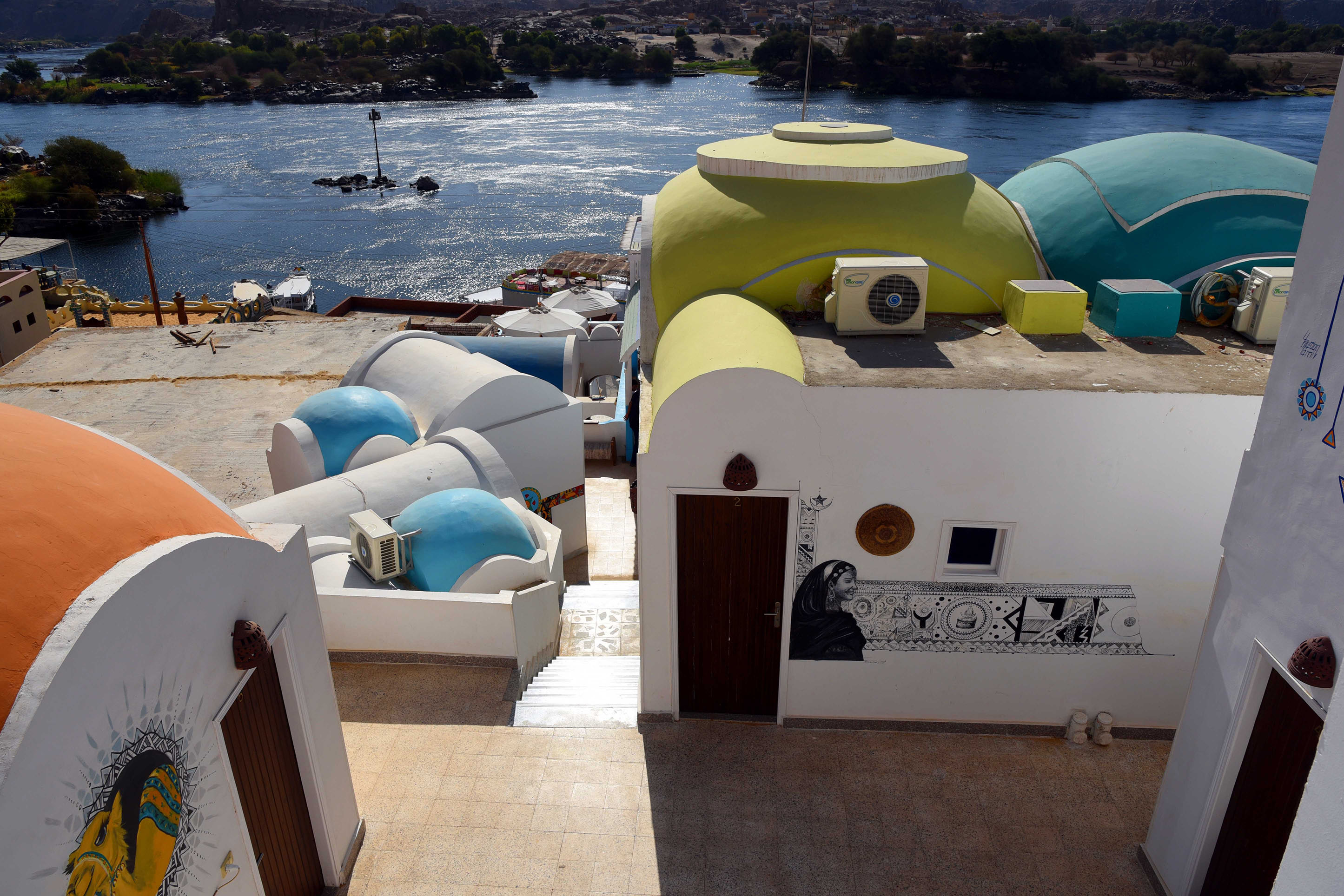
The Nubian house has unique furnishings and decorations that set it apart from other homes. All of these factors give the Nubian legacy a distinct personality that should be directed and protected. The houses of underprivileged people are covered with leaves or corn stalks, whilst the roofs of the wealthier ones are composed of mud bricks fastened to wooden beams, and there is a sort of roof created in the shape of mud-brick domes that we see distributed over Nubia's northern region, as well as domes that resemble half-barrels. The Nubian home is an architecturally significant structure. Organic, in which the Nubian artist was able to address the many levels of the surface by creating degrees and ladders that changed directions depending on the purpose of reaching the entrances and apartments, a concept drawn from ancient Egyptian terraces.
In Egyptian Nubia, there are two primary home types, one of which is the cube-shaped building, which is made with mud bricks and has a flat roof and is the typical shape of the southern area. The main entrance is normally positioned vertically in the direction of the Nile River in the southern wall.
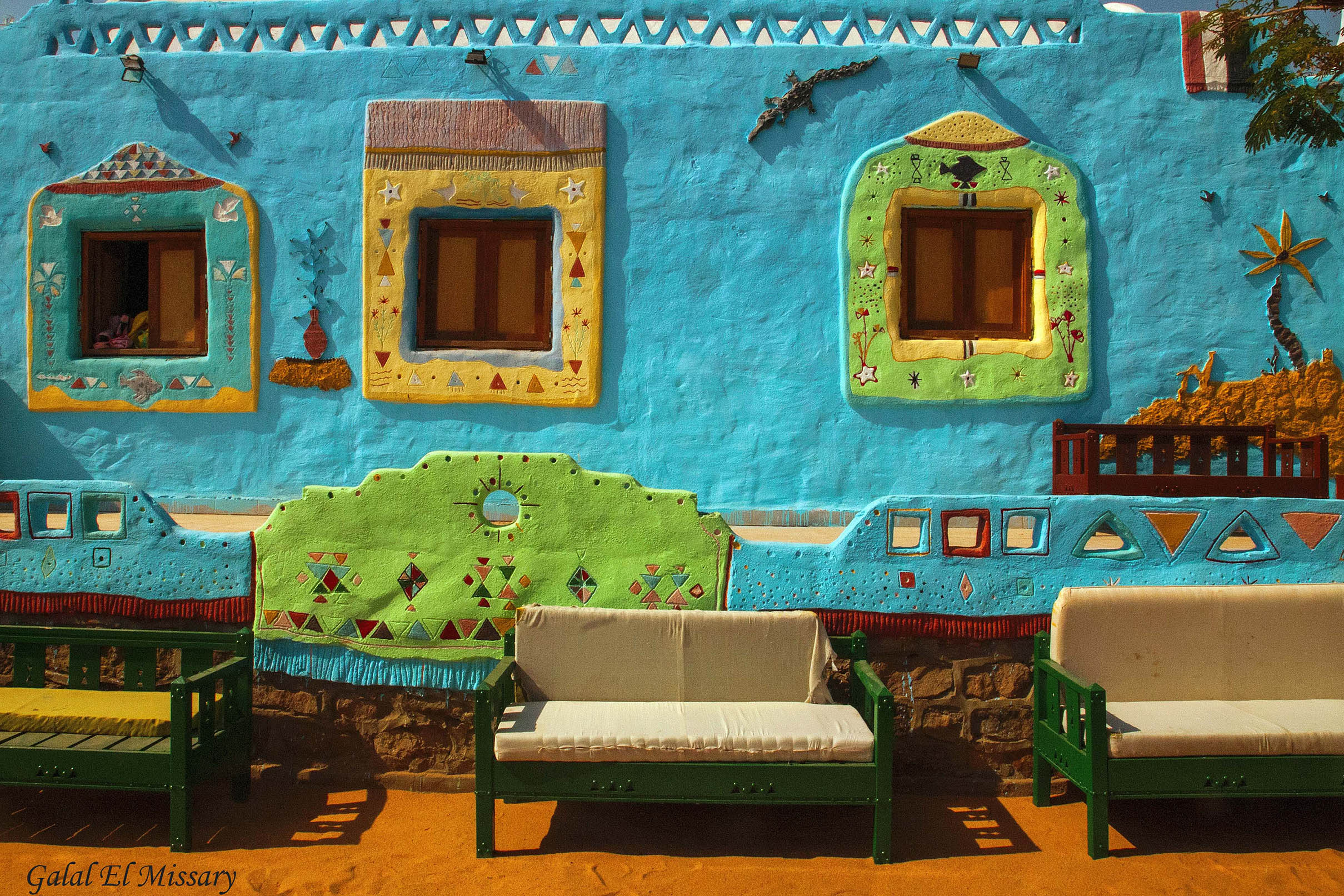
Prof. ASHRAF REDA
Professor of Interior Architecture,
Faculty of Fine Arts, Cairo
Photos by:
Artist, Galal Al Mesarry

